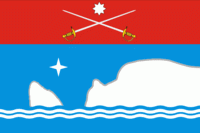Simeiz
 |
 |
There are prehistoric dolmens and fortifications nearby; in the Middle Ages the area was under the control of the Byzantine Empire, which built a fortified monastery in the vicinity (and may have given the town its name). As the Byzantine power weakened, the area fell under the control of Genoa, which in its turn gave way to the Ottoman Empire; under the Ottomans the village was ruled from Mangup. By 1778, with the departure of the Christian population, the village was depopulated.
In 1828 Simeiz came into the ownership of Ivan Akimovich Maltsov, who planted grapevines and fruit orchards; at the start of the 20th century his descendants created a resort, Novy Simoiz, which quickly became one of the most prestigious resorts in the Crimea. This period saw the construction of a park and a number of villas which remain to this day. In 1912 Nicholas II visited with his family. After the October Revolution, Simeiz was nationalized and public sanatoriums were created, mainly specializing in tuberculosis. In 1927 Simeiz was visited by around 10,000 people.
During World War II the Germans occupied Simeiz, causing much death and destruction; the town was liberated by the Red Army on April 16, 1944. On May 18 of that year the local Crimean Tatars were exiled to Central Asia. After the war, the resort experienced a rebirth, and the ruins were gone by 1955. Since the end of the Soviet Union, however, it has seriously deteriorated.
Map - Simeiz
Map
Country - Ukraine
 |
 |
| Flag of Ukraine | |
During the Middle Ages, Ukraine was the site of early Slavic expansion and the area later became a key centre of East Slavic culture under the state of Kievan Rus', which emerged in the 9th century. The state eventually disintegrated into rival regional powers and was ultimately destroyed by the Mongol invasions of the 13th century. The area was then contested, divided, and ruled by a variety of external powers for the next 600 years, including the Polish–Lithuanian Commonwealth, the Austrian Empire, the Ottoman Empire, and the Tsardom of Russia. The Cossack Hetmanate emerged in central Ukraine in the 17th century, but was partitioned between Russia and Poland, and ultimately absorbed by the Russian Empire. Ukrainian nationalism developed, and following the Russian Revolution in 1917, the short-lived Ukrainian People's Republic was formed. The Bolsheviks consolidated control over much of the former empire and established the Ukrainian Soviet Socialist Republic, which became a constituent republic of the Soviet Union when it was formed in 1922. In the early 1930s, millions of Ukrainians died in the Holodomor, a man-made famine. During World War II, Ukraine was devastated by the German occupation.
Currency / Language
| ISO | Currency | Symbol | Significant figures |
|---|---|---|---|
| UAH | Ukrainian hryvnia | â‚´ | 2 |
| ISO | Language |
|---|---|
| HU | Hungarian language |
| PL | Polish language |
| RU | Russian language |
| UK | Ukrainian language |















